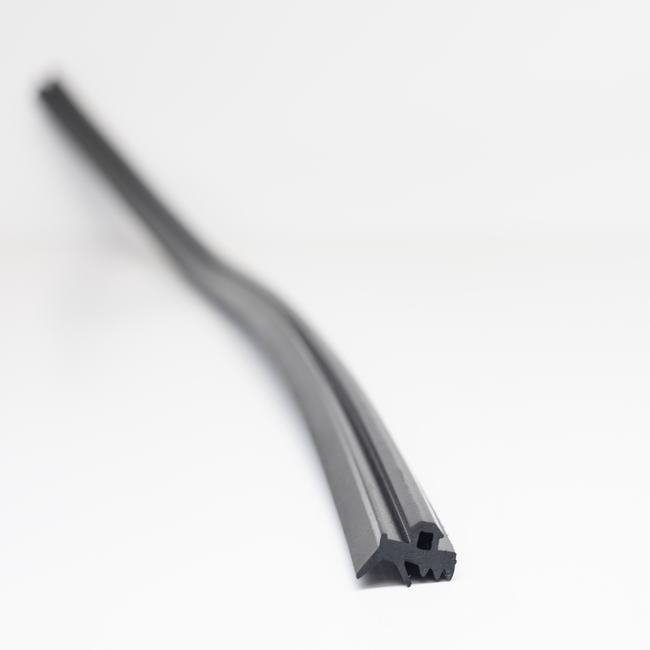Dilatation seals, also known as expansion joints or expansion seals, are crucial components in various engineering and construction applications. These specialized elements play a vital role in accommodating the movements and changes that occur in structures and systems due to factors such as temperature variations, settling, vibration, and seismic activity. This extended description will delve into the various aspects, types, and applications of dilatation seals, shedding light on their significance in modern infrastructure.
**1. ** Purpose and Function:
Dilatation seals serve the primary purpose of absorbing and managing the differential movements and deformations that can occur within structures, pipelines, bridges, and industrial equipment. The main functions of these seals are:
- Compensating Thermal Expansion and Contraction: Temperature fluctuations can cause materials to expand or contract. Dilatation seals allow structures and systems to accommodate these thermal movements without causing damage.
- Absorbing Structural Settlement: As buildings and infrastructure settle over time, expansion joints prevent the development of cracks or structural damage by allowing controlled movement.
- Vibration Damping: In environments with vibrations, such as machinery or transportation infrastructure, dilatation seals help reduce stress on adjoining components.
- Mitigating Seismic Movement: In regions prone to seismic activity, expansion joints are crucial for absorbing and dissipating the energy generated by ground motion, safeguarding the integrity of structures.
2. Types of Dilatation Seals:
There are various types of dilatation seals, each designed to cater to specific applications and requirements. The most common types include:
- Single Expansion Joint: These are simple expansion joints designed to absorb movements in one direction, typically expansion and contraction along a single axis.
- Double Expansion Joint: These expansion joints can absorb movements in two perpendicular directions, making them suitable for more complex structures and systems.
- Universal Expansion Joint: Universal joints are capable of accommodating movements in multiple directions and are often used in piping systems, especially in industrial applications.
- Elastomeric Expansion Joint: These joints use elastomeric materials to absorb movements and vibrations, making them ideal for bridges, buildings, and transportation infrastructure.
- Metal Expansion Joint: Metal expansion joints are used in high-temperature and high-pressure environments, such as industrial pipelines and power plants, where they can withstand extreme conditions.
3. Materials Used:
Dilatation seals are made from a wide range of materials, each chosen based on the specific application’s demands. Common materials include:
- Rubber or Elastomers: These materials are often used for their flexibility and vibration-damping properties.
- Metals: Stainless steel, carbon steel, and other alloys are employed in high-temperature and high-pressure applications.
- Fabric and Composite Materials: Some expansion joints are constructed from fabric-reinforced elastomers or composite materials to provide a balance between flexibility and strength.
4. Applications:
Dilatation seals find applications in various industries and settings, including:
- Construction: In buildings and infrastructure, expansion joints are installed in concrete structures, bridges, and parking garages to accommodate thermal expansion and contraction, prevent cracking, and maintain structural integrity.
- Transportation: Expansion joints are crucial in bridges, highways, and railways to allow for smooth movement and prevent damage caused by heavy loads and temperature changes.
- Industrial Systems: In industrial settings, dilatation seals are used in piping systems, equipment, and machinery to compensate for thermal expansion and vibration.
- Energy Sector: Power plants and other energy facilities utilize metal expansion joints in high-temperature and high-pressure environments to prevent leaks and maintain equipment integrity.
- Seismic Retrofitting: In earthquake-prone regions, dilatation seals are employed as a part of seismic retrofitting strategies to protect structures from earthquake-induced damage.
5. Maintenance and Inspection:
Proper maintenance and regular inspection of dilatation seals are essential to ensure their long-term performance. This may include visual inspections, checking for signs of wear and tear, and monitoring the seals’ functionality.
In conclusion, dilatation seals are vital components in engineering and construction, enabling structures and systems to withstand various environmental and operational challenges. Their diverse types and applications make them indispensable in modern infrastructure, contributing to the safety, longevity, and functionality of numerous projects across multiple industries.










